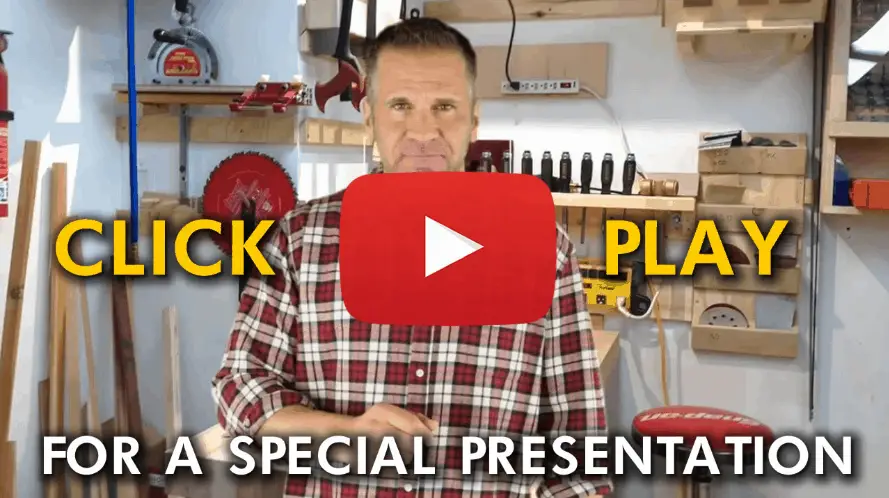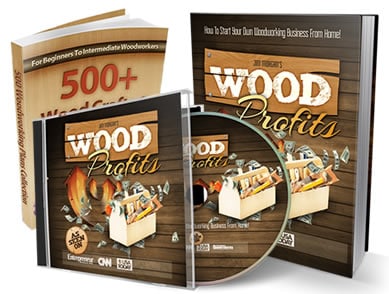Subscribe to WoodWorkWeb on YouTube
When it comes to cross-cutting on the table saw, there are a few challenges that woodworkers often encounter. In the past, Colin had created a cross-cut sled that was overbuilt and weighed almost 26 pounds. This made it difficult to use for extended periods of time, and it was also cumbersome to move around. Additionally, the miter gauge that came with the table saw was not very versatile and had to be reset every time it was used.
To address these issues, Colin created a prototype cross-cut sled using plastic runners and construction grade plywood. This sled was much lighter and more versatile than the previous one, and it worked great for cross-cutting. However, he decided to create a new cross-cut sled that would be more permanent and even better than the prototype. In this article, he will share the plan for building the new sled and the process of doing so.
Key Takeaways
- Cross-cutting on the table saw can be challenging without the right tools.
- Colin created a prototype cross-cut sled that was lighter and more versatile than previous versions.
- Colin will share the plan for and process of building a new cross-cut sled in this article.
Problem with Previous Table Saw Cross-Cutting Techniques
Issues with Heavy Cross-Cut Sled
Colin has faced issues with cross-cutting on the table saw due to the weight and rigidity of the sled. The sled weighs almost 26 pounds, making it difficult to handle and causing fatigue while pushing it through the saw. The sled is also not portable, making it challenging to move around.
Inefficiency of Miter Gauge
The miter gauge that comes with the table saw is not efficient for cross-cutting. The black knob on the miter gauge broke when it fell on the floor, and hehad to replace it with an upgraded miter gauge. Although the upgraded miter gauge is versatile and good, it is still a miter gauge, and he is not satisfied with its front, especially when holding wide boards.
Limitations of Upgraded Miter Gauge
Colin made a prototype of a cross-cut sled using construction grade plywood and plastic runners, which worked great. However, the sled was not permanent, and he had to make a permanent one. He discovered that a bar with ball bearings could be used for a runner on the sled. The sled’s back was laminated with a couple of pieces of Beach wood to ensure it stays flat and straight. The sled’s alignment is crucial, and he aligned it with the miter slot to ensure efficiency.
Benefits of the Prototype Cross-Cut Sled
The Prototype Cross-Cut Sled is a versatile and handy tool for cross-cutting on a table saw. Unlike an overbuilt sled, this sled is light and easy to use. It uses plastic runners, which are more reliable and less prone to expansion and contraction than wood runners. The sled is made of laminated wood, which stays flat and straight throughout its life.
The sled is equipped with a bar that has ball bearings, which ensures that it stays nice and tight and flush. The bar is recessed with screw holes to ensure that it runs free and smooth. The sled is aligned to the miter slots, which ensures that everything on a table saw is aligned to the miter slot.
One of the benefits of the Prototype Cross-Cut Sled is that it is versatile. It can be used for cutting wide boards and is easy to hold. Another benefit is that it is small and handy, making it easy to pack around. The sled is a major upgrade from a miter gauge, which is less versatile and harder to hold.
In conclusion, the Prototype Cross-Cut Sled is a reliable and versatile tool that is ideal for cross-cutting on a table saw. It is easy to use, light, and equipped with plastic runners and a laminated wood base that ensure it stays flat and straight. Its versatility and ease of use make it a must-have tool for any woodworker.
Plan for the New Cross-Cut Sled
Materials Used
Colin plans to build a new cross-cut sled for the table saw. The sled will be made of laminated wood, specifically Beach wood. He explains that laminated wood stays flat and straight throughout its life and does not bend or warp. The back of the sled will be made of two pieces of Beach wood that have been laminated together. The sled will use plastic runners, which he recommends over wood runners due to their flexibility and resistance to expansion and contraction. He also plans to use a surplus metal bar with ball bearings as a runner for the sled.
Benefits of Plastic Runners
Colin emphasizes the benefits of using plastic runners for the cross-cut sled. Plastic runners are flexible and can accommodate slight movement in the miter slots, ensuring a tight fit. They are also resistant to expansion and contraction, which can cause wood runners to become loose or not fit in the slots at all. Plastic runners can be easily cut and customized to fit the miter slots of any table saw.
Advantages of Laminated Wood
Colin explains the advantages of using laminated wood for the back of the cross-cut sled. Laminated wood stays flat and straight throughout its life and does not bend or warp. This makes it a reliable and durable material for the sled. He chose Beach wood specifically for its flatness and straightness after laminating two pieces together. The laminated wood will provide a sturdy and stable base for the sled, ensuring accurate and precise cuts.
Overall, Colin’s plan for the new cross-cut sled includes using laminated Beach wood for the back and plastic runners for the sled. The use of these materials will ensure a durable and reliable sled that can accommodate slight movement in the miter slots and provide accurate and precise cuts.
[Video] 3 Most Common Mistakes
When Setting Up Shop

A woodworking friend of mine shared this video by Ralph Chapman with me that helped him set up his workshop.
The video explains the benefits of Ralph Chapman’s guide about setting up an affordable workshop and avoiding the most common mistakes offers to anyone interested in woodworking.
Process of Building the New Cross-Cut Sled
Removal of the Steel Bar
Colin in the video discovered that the steel bar from his old cross-cut sled had ball bearings and was still in good condition. However, it had a pin that was pressure-fit and needed to be removed without bending the rod. He removed the bar and checked if it ran freely and smoothly.
Drilling and Tapping
After removing the steel bar, he drilled three holes and countersunk them. He then lubricated the setup to avoid overheating the drill bit. He used a number eight by three-quarters screw to secure the steel bar in place.
Installation of the Runner
Colin used plastic runners, which he cut from white plastic he purchased from a local plastic store. He recommended using plastic runners as opposed to wood runners because wood expands and contracts, causing the wood runner to become sloppy or not fit in the slot. He recessed the screw holes and placed washers on the steel bar. He then aligned the runner to the center of the table saw and secured it in place with double-sided tape.
Attaching the Base
Colin drove a screw up into the laminated back piece of the sled from the backside. He then aligned the sled to the miter slot and checked if it was seated and firm. He aligned the back with a square and nailed it down.
Securing the Back Piece
Colin laminated a couple of pieces of beach for the back piece of the sled. He used laminated wood to ensure that the wood would stay flat and straight throughout its life. He then checked if the sled was aligned to the miter slot and nailed it down.
Overall, he in the video demonstrated how to build a new cross-cut sled using plastic runners and laminated wood for the back piece. The process involved removing the steel bar, drilling and tapping, installing the runner, attaching the base, and securing the back piece.
[Guide] How To Launch Your Woodworking Business For Under $1000
Click Here To View
If you’re considering turning your woodworking hobby into a part-time business check out this helpful guide on how to get started.
Alignment of the Sled
Importance of Alignment
Aligning the sled is a crucial step in ensuring accurate and safe cross-cutting on a table saw. Proper alignment ensures that the sled moves smoothly and without any binding or wobbling, which can lead to inaccurate cuts or even kickback.
Alignment to the Miter Slots
The alignment of the sled is done to the miter slots rather than the blade or fence. This is because everything on a table saw is aligned to the miter slots, making them the most reliable reference point. To align the sled, a board is used to fit snugly in the miter slot, and the sled is positioned to align with the board. Once aligned, the sled is nailed down and screws are inserted to secure it in place.
Plastic runners are recommended for use on the sled, as they are more stable and less prone to expansion and contraction than wood runners. The sled should be lightweight and easy to maneuver, with a plastic runner that fits snugly in the miter slot. Proper alignment to the miter slots ensures accurate and safe cross-cutting on a table saw.


